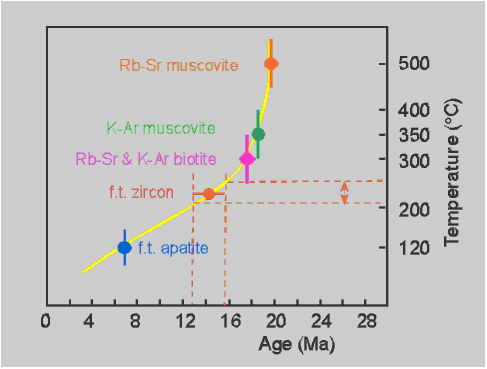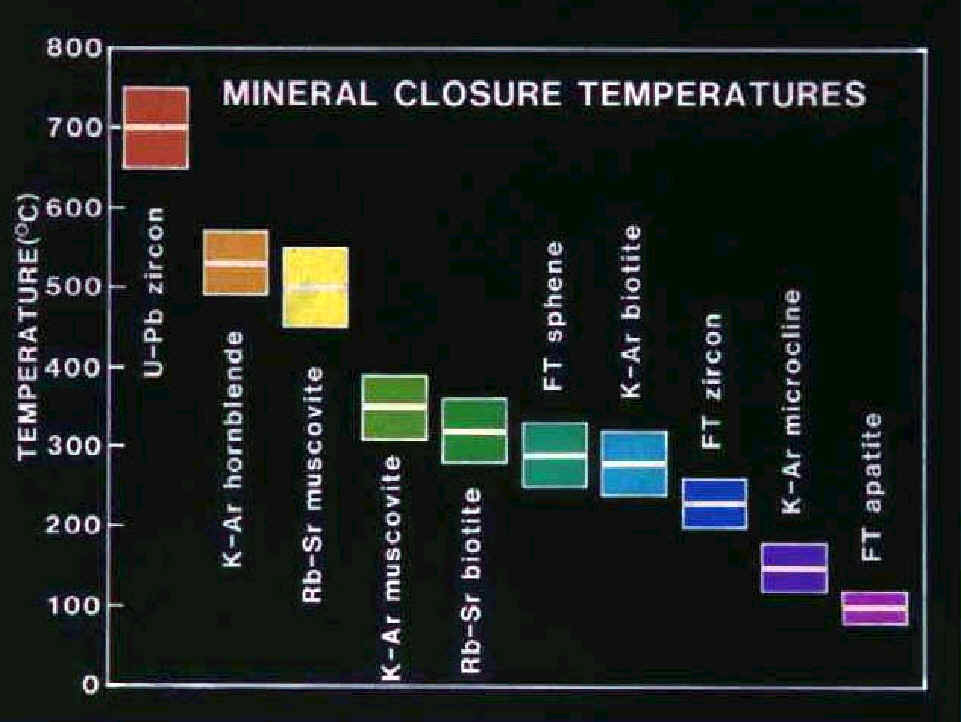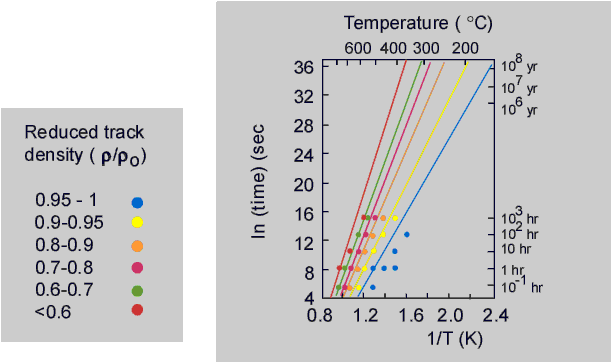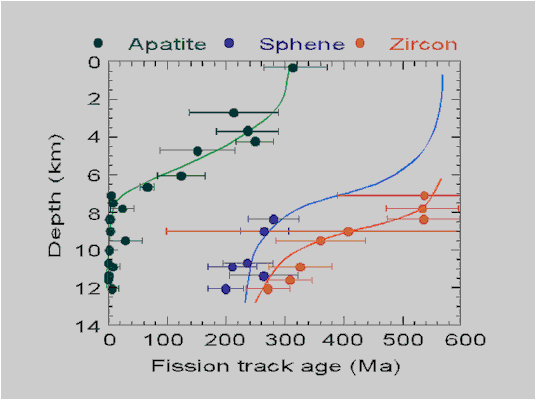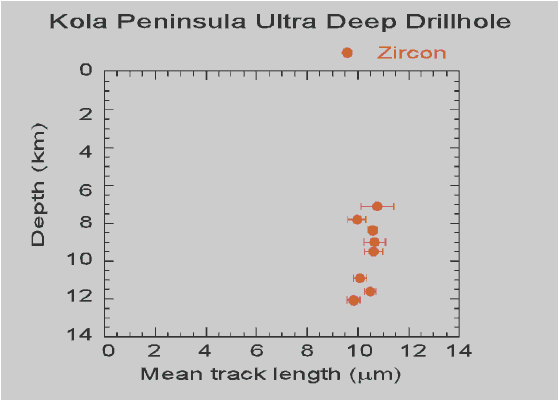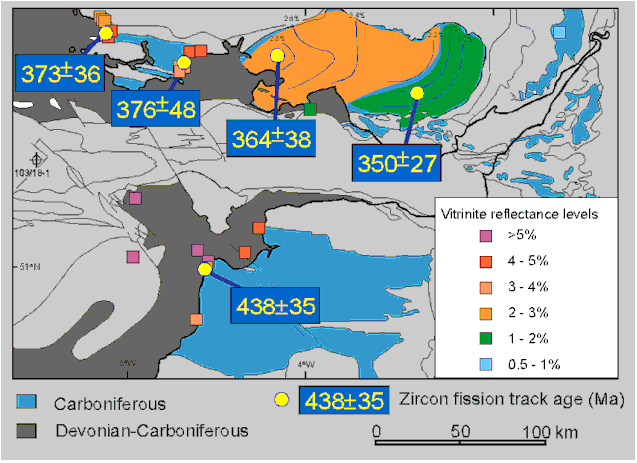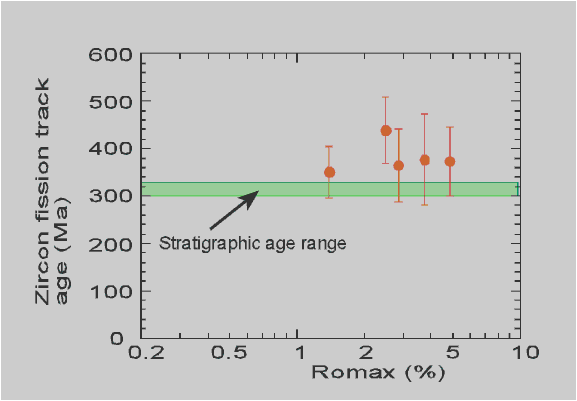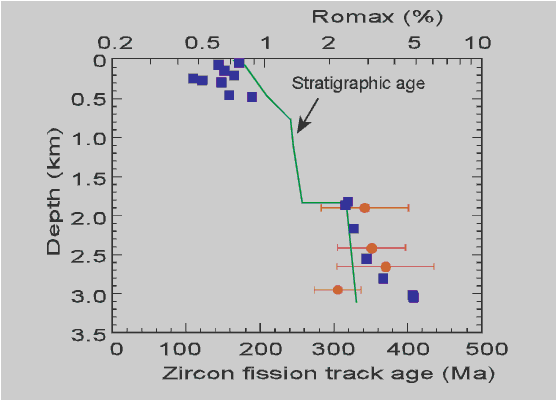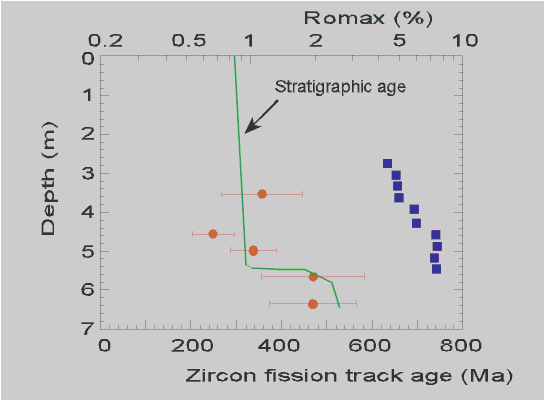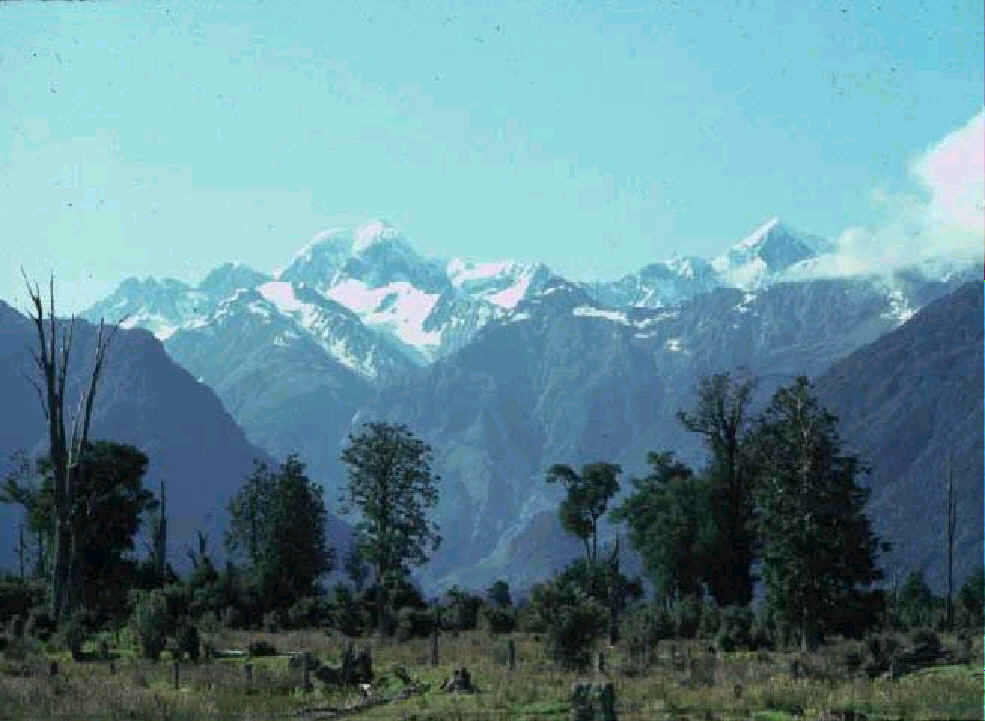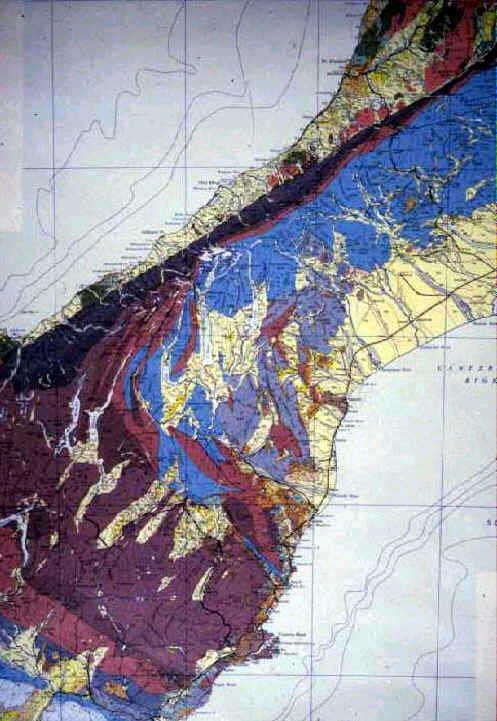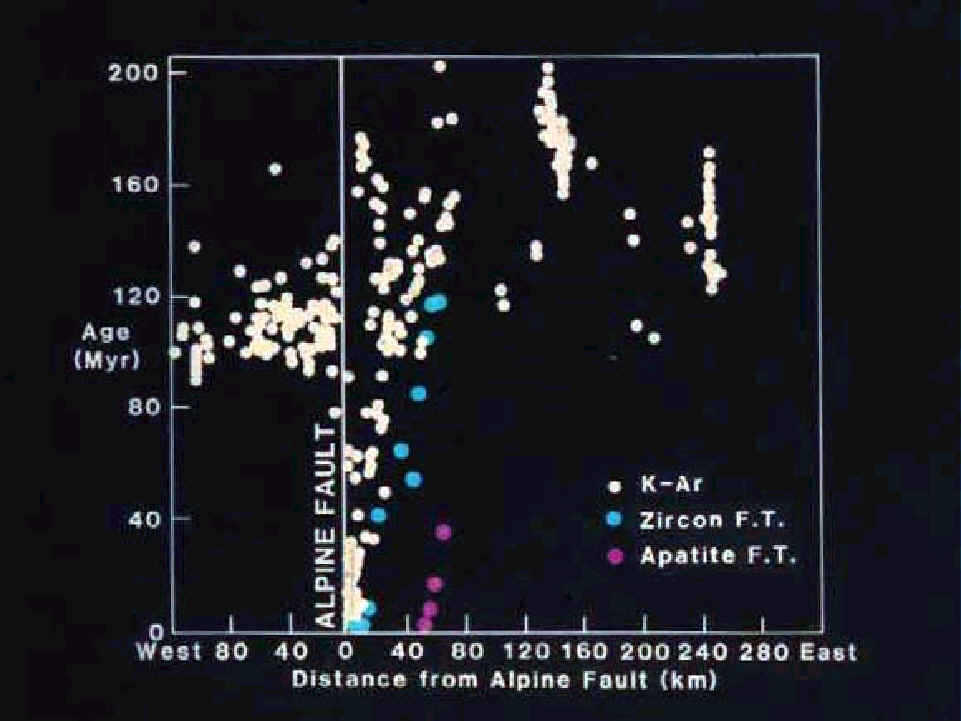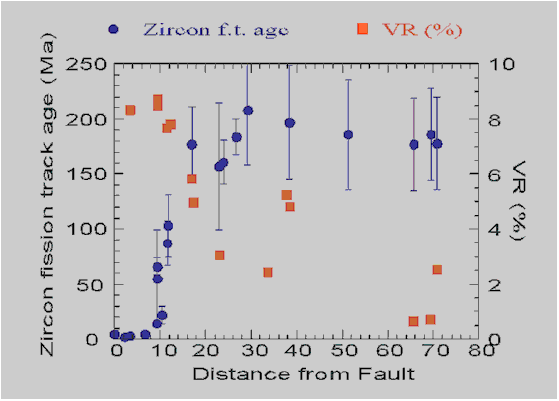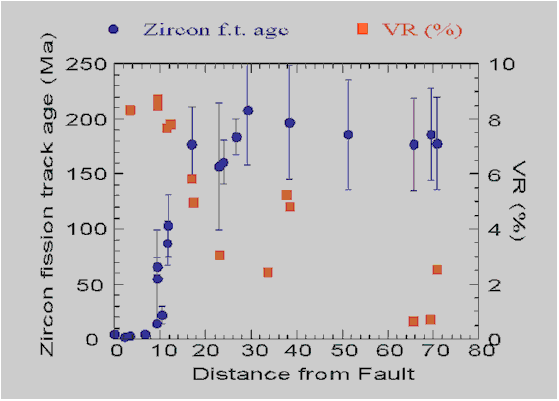 |
 |
 |
 |
 |
 |
||
 |
|||||||
Assessing Zircon Fission Track Analysis as a paleotemperature tool for sedimentary basins
Paul F. Green1, Ian R. Duddy1, Kerry A. Hegarty1, Sara S. Foland2 and Valery Gorbachev3
1 Geotrack International Pty Ltd, Melbourne, Australia
2 Amoco Corporation, Denver, Co
3 Nedra Enterprise, Jaroslavl, Russia
Why study fission track annealing kinetics in zircon?
AFTA® provides paleotemperatures and timing information up to ~130ºC (depending on Cl content)
Because of the greater stability of fission tracks in zircon, ZFTA can, in principle, provide similar information at higer temperatures if the annealing kinetics are understood
Laboratory studies of fission track annealing kinetics in zircon are difficult because of radiation damage in natural zircons
Natural studies are also difficult because of the rarity of geological situations where present temperatures are high enough to produce observable effects
Geological Studies
Zircon fission track ages in slowly cooled rocks from the European Alps suggest a "closure temperature" for fission track retention in zircon of 240±50ºC by comparison with other radiometric dating techniques. Other opinions have favoured a value around 175ºC.
Laboratory Studies
Recent laboratory studies involving measurement of confined track lengths have given better definition of annealing kinetics Extrapolating the results to geological timescales (~106 Ma) indicates that the zircon "Partial Annealing Zone" spans the temperature range 170 to 390ºC (±50ºC)
Our Approach
- Investigate geologiacl conditions where present-day temperatures exceed 200ºC
Kola Peninsula Ultra Deep Drillhole- Investigate correlation between zircon fission track age reduction and other paleo-thermal indicators in rocks which have reached temperatures in excess of 200ºC
South wales coalfield (UK)
Cleveland Basin (UK)
Arkoma Basin (USA)
Southern Alps (NZ)
Kola Peninsula Ultra Deep Drillhole
Zircon fission track age pattern shows a decrease with depth, reflecting a Paleozoic cooling episode (ca. 250 to 300 Ma), also shown by sphene and apatite ages Correlation of zircon fission track age in the deepest sample with the timing of this episode as revealed by sphene and apatite data suggests that this sample, from a present-day temperature of ~212ºC, has undergone little or no significant age reduction since cooling to that temperature
Zircon track length data show very little decrease with depth, suggesting that cooling to a temperature of ~212ºC, the deepest sample has undergone very little annealing Combined with the fission track age data, the Kola data suggest that temperatures well above 212ºC are required to produce significant annealing effects in zircon
South Wales Coalfield and Devon
Cloughton-1, Cleveland Basin (UK)
Devils Backbone Unit No.1, Arkoma Basin
Southern Alps, New Zealand
The Southern Alps of New Zealand’s South Island provide an excellent example of an "exhumed Zircon Partial Annealing Zone". Torlesse Metasediments and their equivalents the Alpine Schists, have been exposed as a result of uplift and erosion causedby Late Tertiary compression across the modern Plate Boundary represented by the Alpine Fault. Comparison of ZFTA data with conventional paleotemperature indicators such as Vitrinite Reflectance data, provides an insight into the conditions required to reset zircon fission track ages
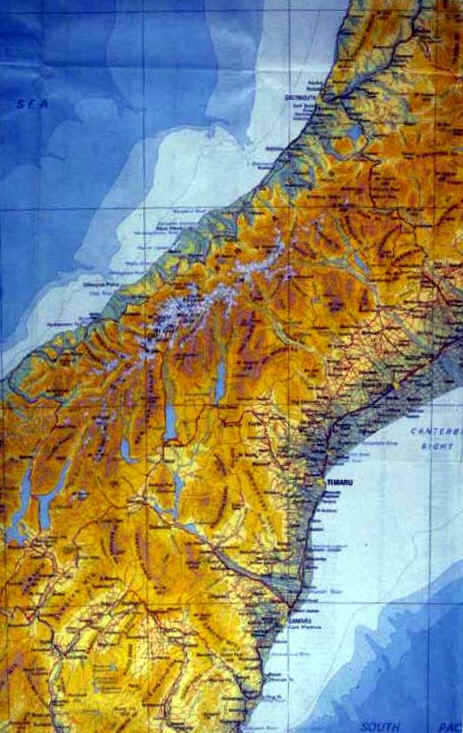
Southern Alps (NZ): Arthurs Pass Transect
Southern Alps (NZ): Lewis Pass Transect
Conclusions
The results of this study suggest a broad correlation between fission track annealing in zircon and equivalent VR levels:
No detectable annealing <4% Romax
Some age reduction ~6% Romax
Total annealing ~8% Romax
VR kinetics developed by Burnham and Sweeny (1989) suggest that a VR of 4% corresponds to a maximum paleotemperature around 260ºC (for a heating rate of 1C/Ma)
Total annealing in samples from the Southern Alps of New Zealand correlates with the onset of chlorite-grade greenschist metamorphism, for which temperatures of around 300ºC or above have been suggested.
Further work is in progress to compare zircon data with other paleotemperature indicators to refine the details of fission track annealing kinetics in zircon.
All present indications are that zircon will only prove useful in regions that have been subjected to greenschist metamorphism.
